Ho Dynasty Citadel: The Largest Remaining Stone Structure In Southeast Asia
Ho Citadel is a time capsule that stores captivating tales of a very significant era of Vietnamese history. Situated in Thanh Hoa, Ho Dynasty Citadel is widely regarded as a historical and architectural gem, a true testament to the nation's rich cultural heritage. From its location and architecture to its historical significance and artifacts, Ho Dynasty Citadel invites visitors to travel back in time.
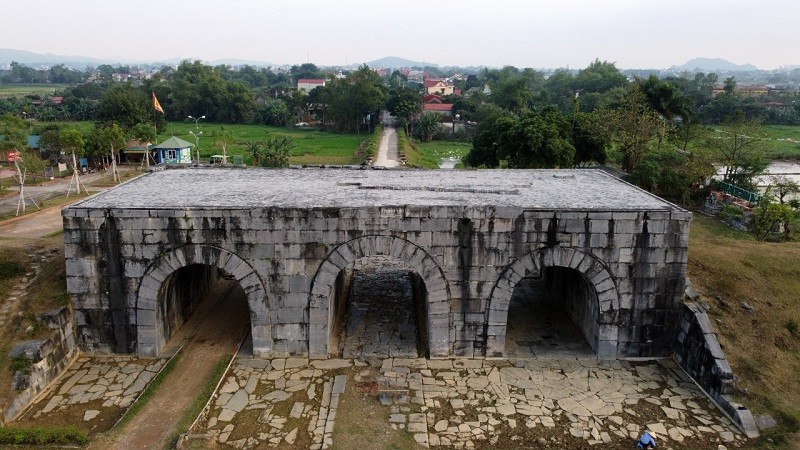 |
| Ho Citadel is a time capsule that stores captivating tales of a very significant era of Vietnamese history. Photo: Kinhtedothi |
The Citadel of the Ho Dynasty was built in 1397 under the supervision of Ho Quy Ly, the very first monarch of the dynasty. The reason behind its construction was a coup. When Ho Quy Ly forcibly took the throne in 1400, he relocated the capital and opened up a new chapter in Vietnam’s feudal era. As the capital of the country from 1398 to 1407, it acted as the political, economic, and cultural center of North Central Vietnam.
The Ho Dynasty Citadel is a groundbreaking phenomenon in terms of techniques for building a great project with the basic materials being large rocks. The large stone slabs required a new construction technique without the use of any mortar.
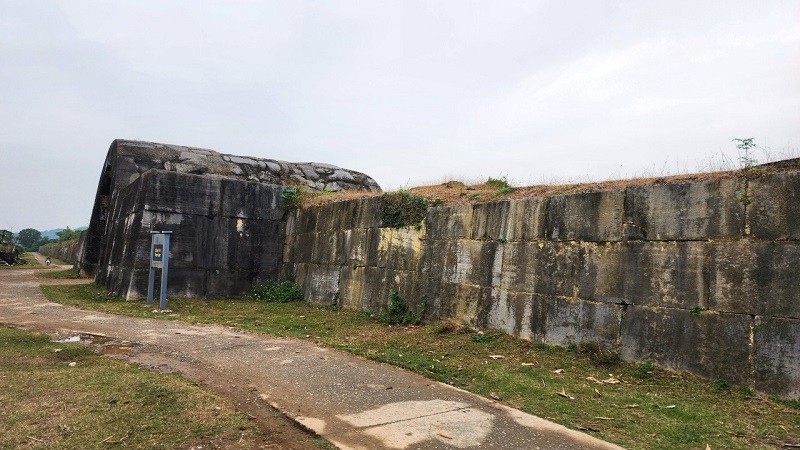 |
| The Ho Dynasty Citadel is a groundbreaking phenomenon in terms of techniques for building a great project with the basic materials being large rocks. Photo: Kinhtedothi |
Thanks to unique construction techniques and the use of sustainable materials, especially large stone blocks, the Ho Dynasty citadel is very well preserved in an almost intact natural landscape.
This is one of the few citadel relics that has not been affected much by the urbanization process. The landscape and architectural scale are still preserved almost intact, and attract many tourists coming to admire the historical site.
The Ho Dynasty Citadel is described as a magnificent structure because of its technique and unique stone construction in Vietnam.
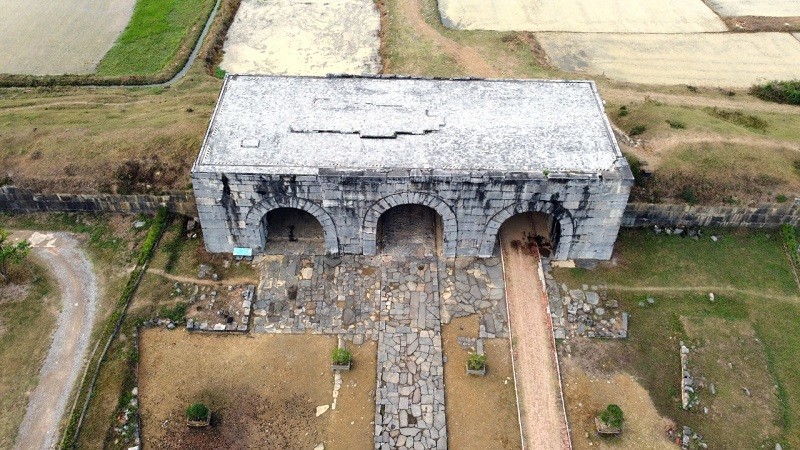 |
| This is one of the few citadel relics that has not been affected much by the urbanization process. Photo: Kinhtedothi |
The stone slabs are on average 1.5m long, some are up to 6m long, and weigh an estimated 24 tons. The stone wall has a circumference of more than 3.5 km and is formed from stacked stone blocks.
Throughout its history, Ho Citadel has gone by many names: An Ton, Tay Do, Tay Kinh, Thach Thanh, Tay Giai, etc. Most of these are bestowed upon the citadel by the locals.
Ho Dynasty Citadel is a UNESCO World Cultural Heritage Site. After 11 long years of application, the citadel of the Ho Dynasty finally earned the coveted accolade, an emblem that recognizes its historical and cultural values.
Moreover, Ho Citadel is surrounded by gorgeous and tranquil scenery. The unspoiled beauty of the landscape is another aspect that attracts numerous tourists to the citadel.
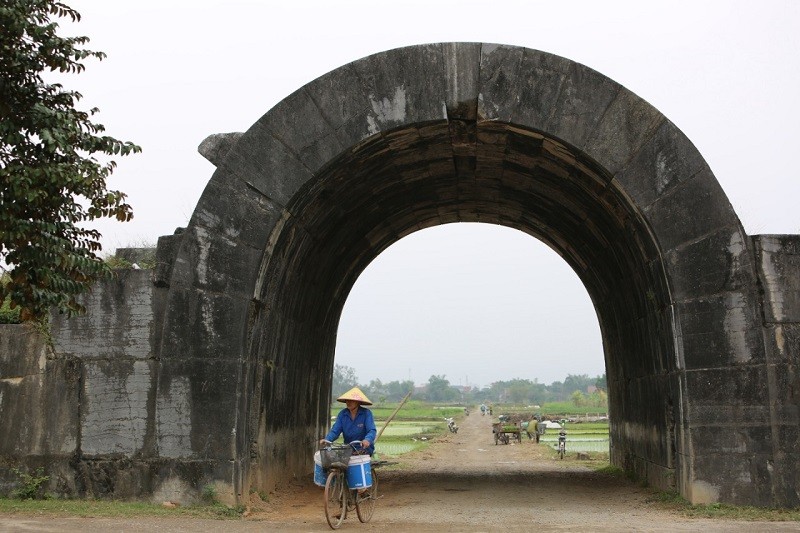 |
| Ho Citadel is surrounded by gorgeous and tranquil scenery. Photo: Kinhtedothi |
The outer wall, known as La Thanh, envelops the citadel as a protective barrier and the first line of defense. Spanning approximately 4 kilometers, this perimeter reflects the dedication to protecting the inner sanctum from attacks and floods.
Hao Thanh is essentially a moat encircling Ho Citadel's outer wall. This 90-meter wide and 6.5-meter deep component was a tremendous idea in the meticulous plan behind the citadel's defense. Undoubtedly, the moat played a crucial role in ensuring the citadel's safety.
Within the heart of the citadel lies Hoang Thanh, an architectural masterpiece that once housed the royal family. Its meticulous design, including four gates facing all four directions and the use of massive limestone blocks, speaks volumes about the skills and dedication of the builders.
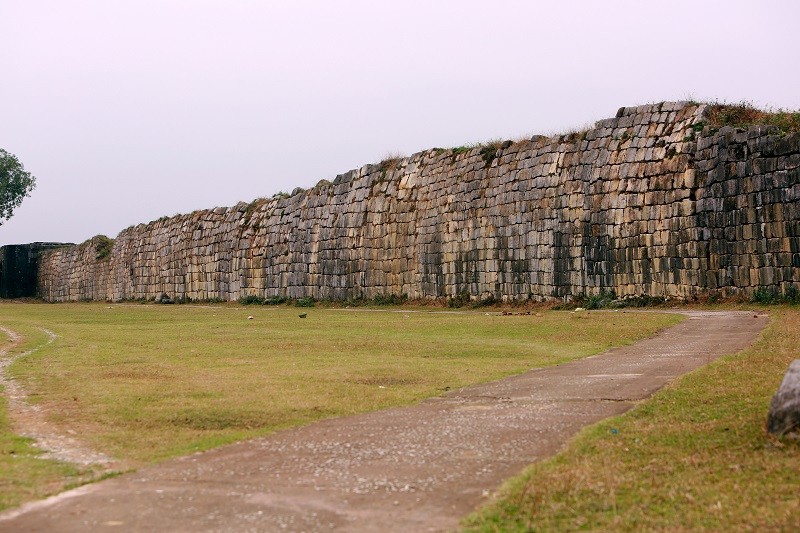 |
| The stone slabs are on average 1.5m long, some are up to 6m long, and weigh an estimated 24 tons. Photo: Kinhtedothi |
Nam Giao Altar, situated south of the citadel's premises, holds immense cultural and spiritual significance. This symbolic piece of the citadel is not simply an intricate design choice but also an example of the cultural values of the Ho Dynasty.
In 2023, the World Cultural Heritage of Ho Dynasty Citadel welcomed about 250,000 visitors, including nearly 2,000 international visitors.
Thanh Hoa is an underrated tourist destination due to its sheer volume of attractions in the surrounding areas. However, visiting the province will help you uncover several prominent sites like Sam Son Beach, Hai Tien Beach, Ham Rong Bridge, and Ben En National Park.
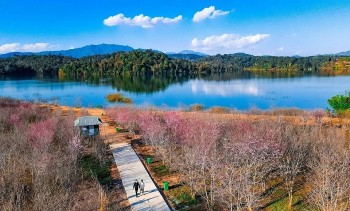 | Explore Pa Khoang – The Largest Lake In Dien Bien Province Pa Khoang Lake, the largest reservoir in Dien Bien province, is nestled among majestic natural surroundings and boasts a refreshing climate and abundant vegetation. |
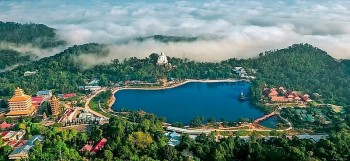 | Explore Mountain Destinations Near Ho Chi Minh City Ba Ra, Ta Cu, Ba Den, Cam, and Chua Chan are the famous mountains near Ho Chi Minh City, with many attractive activities for tourists ... |
 | The Ritz Herald Recommends 9 Hidden Gems To Visit In Vietnam Take a look at the top 9 beautiful “hidden gems” places around Vietnam with untouched nature and pristine beauty, recommended by U.S. newspaper The Ritz ... |
Recommended
 Travel
Travel
Strategies for Sustainable Growth of Vietnam’s Tourism from International Markets
 Travel
Travel
Vietnam Strengthens Its Presence On The Global Tourism Map
 Multimedia
Multimedia
Phong Nha-Ke Bang National Park Named Top Adventure Travel Site
 Travel
Travel
Phong Nha Named Top Budget-Friendly Travel Destination for Spring 2025: Agoda
Popular article
 Travel
Travel
Four Indian Films Introduced to Lao Cai Audience
 Travel
Travel
Vietnam to Waive Visas for Citizens from 12 Countries until 2028
 Travel
Travel
Ninh Binh Full-day Tour among World’s Top Experiences: TripAdvisor
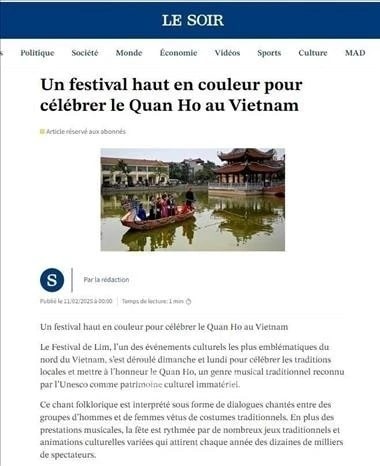 Travel
Travel








